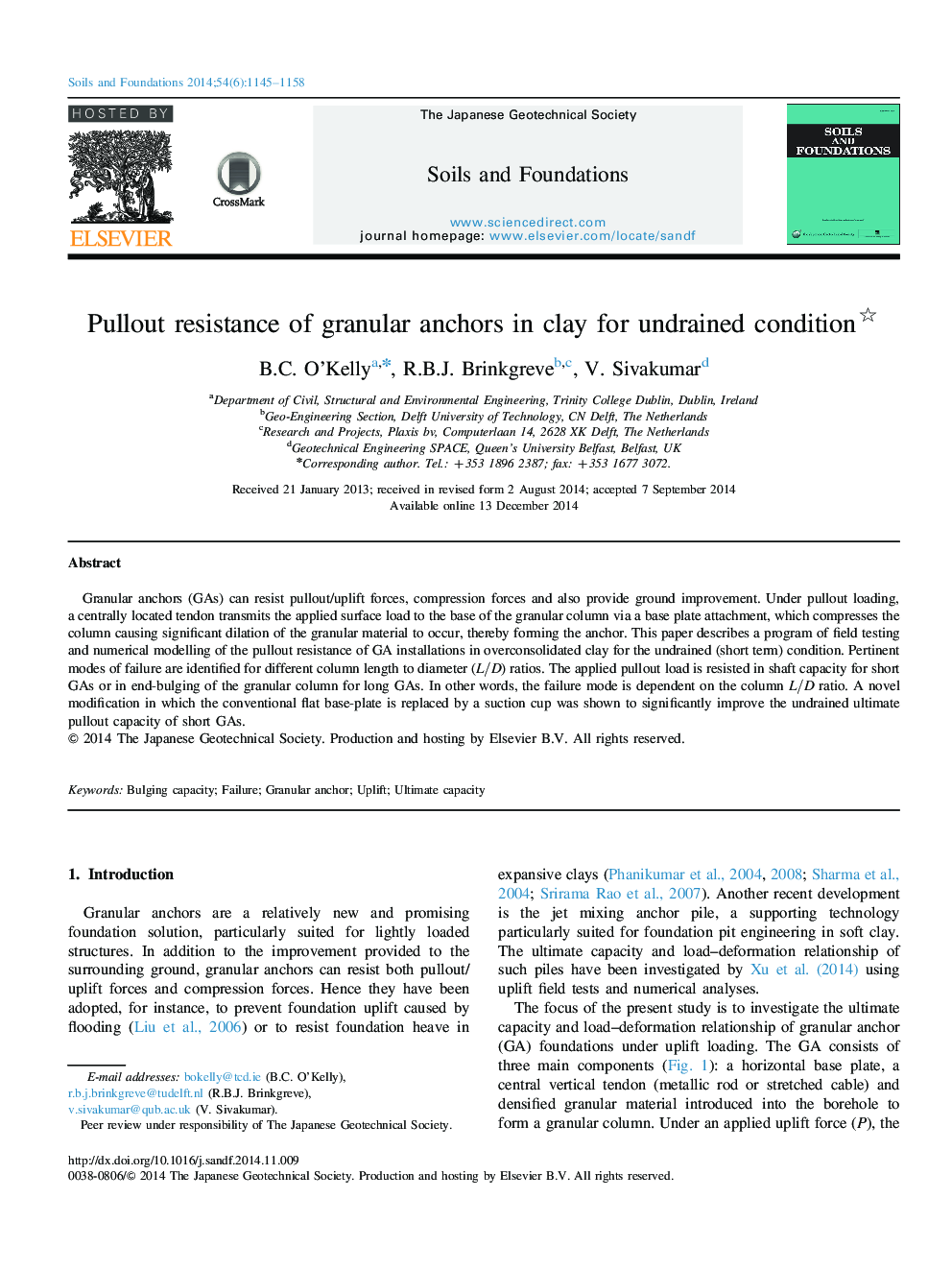| Article ID | Journal | Published Year | Pages | File Type |
|---|---|---|---|---|
| 307273 | Soils and Foundations | 2014 | 14 Pages |
Granular anchors (GAs) can resist pullout/uplift forces, compression forces and also provide ground improvement. Under pullout loading, a centrally located tendon transmits the applied surface load to the base of the granular column via a base plate attachment, which compresses the column causing significant dilation of the granular material to occur, thereby forming the anchor. This paper describes a program of field testing and numerical modelling of the pullout resistance of GA installations in overconsolidated clay for the undrained (short term) condition. Pertinent modes of failure are identified for different column length to diameter (L/DL/D) ratios. The applied pullout load is resisted in shaft capacity for short GAs or in end-bulging of the granular column for long GAs. In other words, the failure mode is dependent on the column L/DL/D ratio. A novel modification in which the conventional flat base-plate is replaced by a suction cup was shown to significantly improve the undrained ultimate pullout capacity of short GAs.
